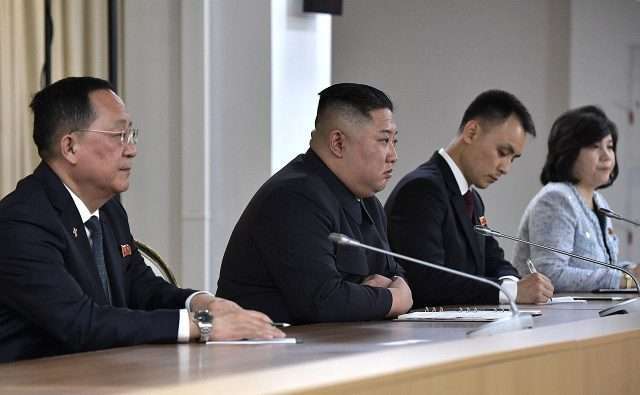The new North Korean missile platforms and the strategic consequences in the Asia-Pacific.

Author: Riccardo Rossi
The recent North Korean missile test alarmed the Asia-Pacific region and demonstrated that Pyongyang has the military infrastructure and hardware to threaten U.S. interests and military operations in the region.
The Korean Central News Agency reported on March 24th, 2022, that Kim Jong-Un’s regime tested the Hwasong-17 intercontinental ballistic missile (ICBM) in service from 2020 in the Ballistic Missile Force. According to the report North Korea a growing regional and global threat military power published in 2021 by the Defense Intelligence Agency, the Ballistic Missile Force includes:
“[…] units operating short-range (SRBM), medium-range (MRBM), intermediate-range (IRBM) ballistic missiles, and ICBMs, each of which North Korea has stated represents a nuclear-capable system class”.
Within the North Korea Ballistic Missile Force, the Japanese Ministry of Defense considers the Hwasong-17 the platform with the broadest capability in its class. This category includes the Hwasong-12 intermediate-range ballistic missile (operational range of about 5,000 km), the Hwasong-14 ICBMs (with a range of more than 5,500 km) and the 17 (with the ability to hit targets at more than 10,000 km).
According to the Korean Central News Agency, the success of the Hwasong-17 test guarantees North Korea a new important launching platform to plan a possible attack against the hubs that are strategically indispensable for U.S. military operations in the Asia-Pacific (Geostrategy and military competition in the Korean Peninsula). Among these, we can remember the bases of the U.S. Navy, Army Airforce and Marines located in the Republic of Korea, in the Japanese archipelago, in the Philippines and near Guam (The Geostrategic Role of the Philippines in Supporting U.S. Interests in the Southwest Asia-Pacific Area).
The latter territory for the Kim-Jong regime represents a prime target given its proximity to the Miyako Straits, Taiwan, and its function as a pivot for U.S. Navy and Airforce-led operations in the Asia-Pacific. This assessment is confirmed in the 2015 Department of Defense report The Asia-pacific maritime security strategy. Achieving U.S.National security objectives in a changing environment, which indicates at Guam the deployment of a portion of the Los Angeles- and Virginia-class nuclear attack submarines, Ohio-class ballistic missile submarines and a logistics support platform for jets (F-22, F-35), strategic bombers (B-52, B-1 Lancer, and B-2 Spirit), and tanker aircraft (The geostrategic importance of the Island of Guam in the U.S. policy of containment of Chinese expansionism in the Asia-Pacific).
Risk Assessment
While Kim Jong-Un’s regime considers the successful test of the Hwasong-17 as a tool to improve its offensive capability against U.S. bases in the Asia-Pacific, particularly Guam, in the geostrategic view of the People’s Republic of China (PRC) and the Russian Federation, these North Korean missile tests constitute a threat to the stability of the Peninsula and indirectly to its security, since both countries share a borderline with North Korea.
In this sense, Beijing and Moscow have developed a partnership for the Korean Peninsula to preserve a condition of stability and pursue a double objective. On the one hand, make the regime of Kim Jong-Un perform the function of buffer state, separating the Chinese and Russian territories from the Republic of South Korea and the relative U.S. bases. On the other hand, to avoid the outbreak of a conflict between Pyongyang and Seoul, which could be stimulated by the race for new and more effective armaments. The U.S. political scientist Gilbert Rozman in his text Joint U.S-Korea Academic Studies (2019), analyses this possibility of military conflict that would lead to three serious consequences:
- A Direct Sino-Russian involvement in the conflict whose effects would affect the Korean, Chinese, Russian and Japanese civilian population.
- The possibility is that the United States will employ its bases located in Japan and on the island of Guam as a hub for the launch of power projection operations against Pyongyang and the Chinese and Russian military installations. ù
- A conflict in the Korean Peninsula would lead to a nuclear exchange between North Korea and the United States.
In the face of these three eventualities, according to the report published in 2017 by the U.S.-China economic and security review commission, Beijing and Moscow consider it a priority to maintain tight control over Pyongyang’s economic development and nuclear missile programs, maintain a diplomatic dialogue with the United States, and preserve their respective military presence near the Peninsula.
Regarding the Sino-Russian willingness to preserve a bilateral dialogue with the United States, Gilbert Rozman believes it represents an important tool available to Beijing to resolve possible crises between Pyongyang and Seoul peacefully. An example can be considered the proposal made by the PRC to Washington during the period of the 2016 North Korean nuclear tests, called double freeze, which provided for the suspension of the Kim Jong-Un regime’s missile tests on the condition that the U.S. and South Korean armed forces end their military exercises.
To the diplomatic dialogue, the Russian-Chinese political-military theory adds the importance of maintaining a constant military presence near the Peninsula and simultaneously carrying out war manoeuvres such as in the 2018 Vostok exercise in which Beijing took part with 3200 military personnel to contain U.S. pressure.
